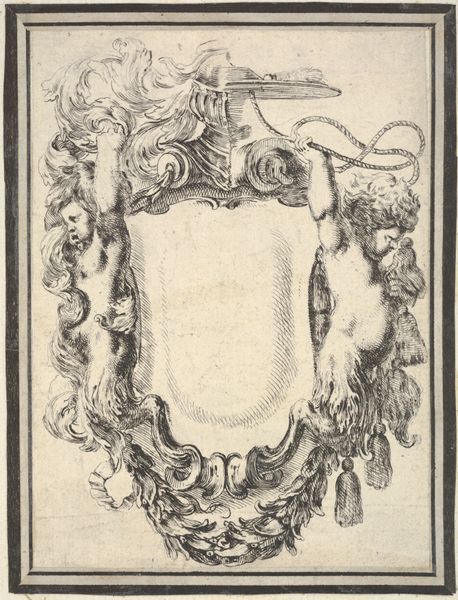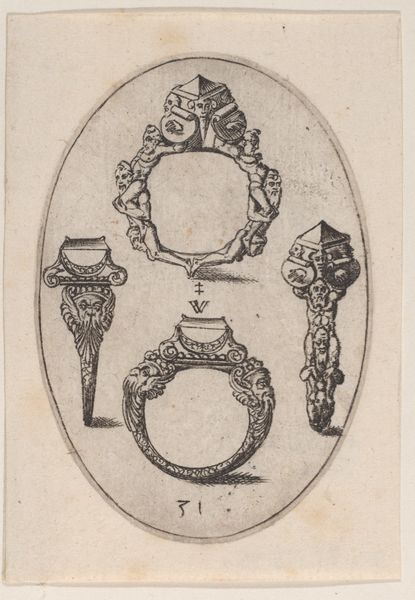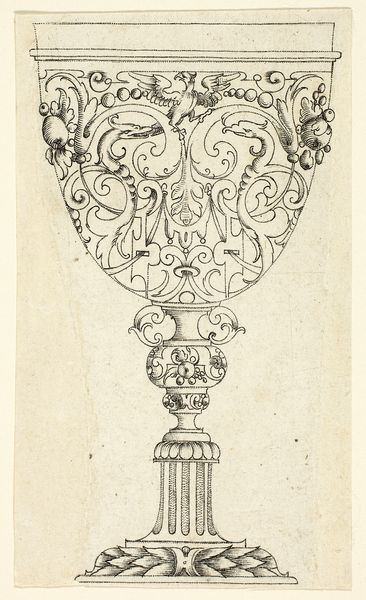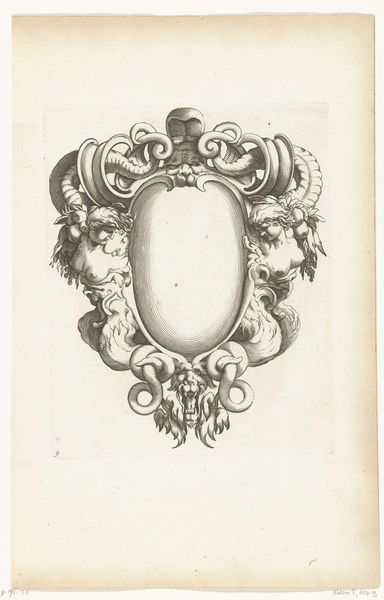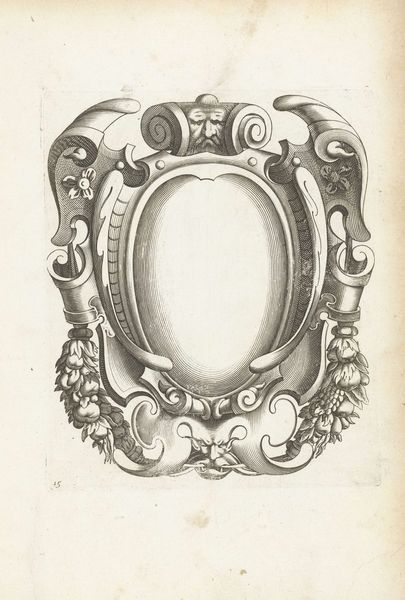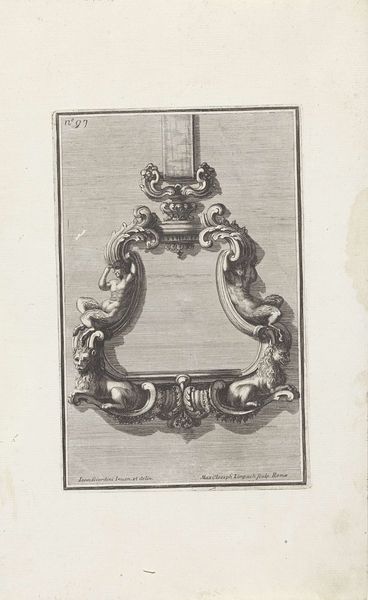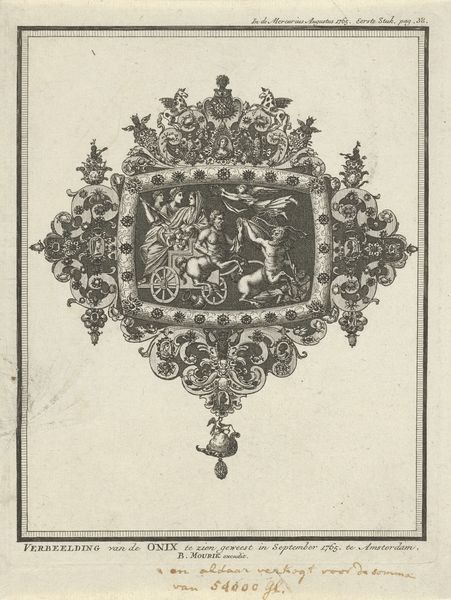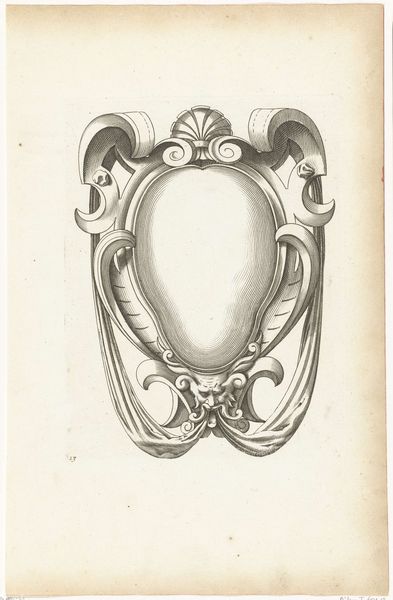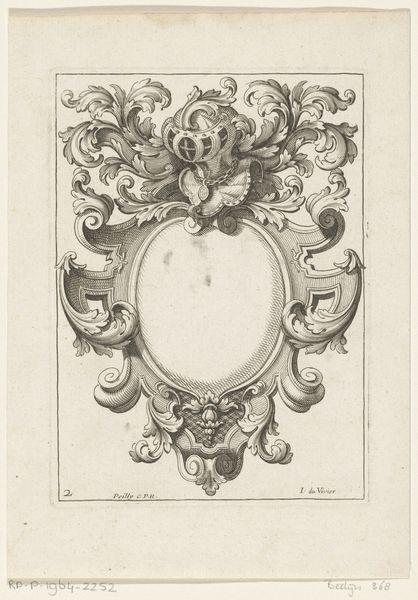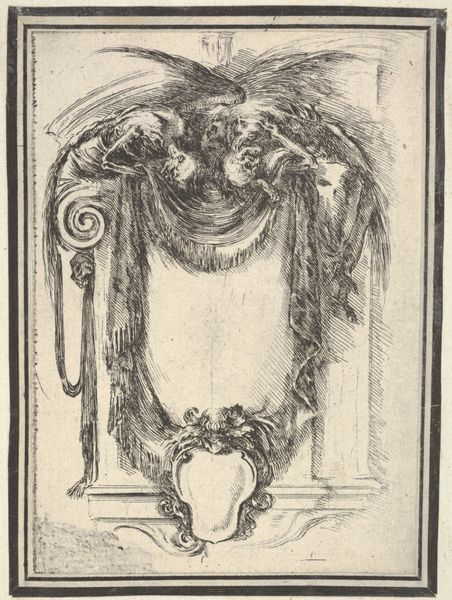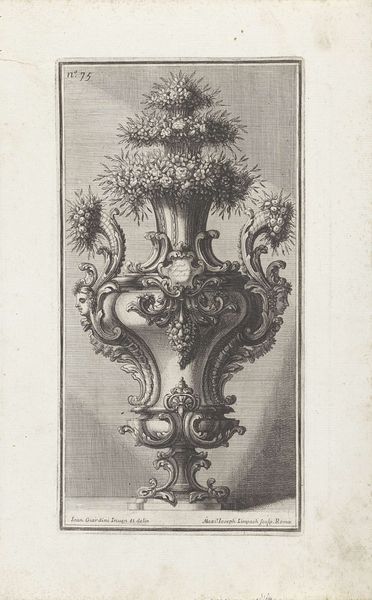
Plate 8: a cartouche flanked by dragons, their tails supporting a crown at top, from 'Nouvelles inventions de Cartouches' 1647
0:00
0:00
drawing, print, etching, engraving
#
drawing
#
baroque
#
pen drawing
# print
#
etching
#
fantasy-art
#
line
#
decorative-art
#
engraving
Dimensions: sheet: 6 7/8 x 5 3/16 in. (17.5 x 13.1 cm)
Copyright: Public Domain
Curator: Immediately, I’m struck by how playful this piece is, considering it’s a rather serious depiction. Editor: We're looking at "Plate 8: a cartouche flanked by dragons, their tails supporting a crown at top, from 'Nouvelles inventions de Cartouches,'" created by Stefano della Bella in 1647. It’s an engraving. Curator: Ah, yes. The stark black lines really emphasize the fantastical elements, don’t they? Those dragons are wonderfully menacing and decorative. The whole piece is a study in contrasts between the solid forms and delicate lines. Editor: It does showcase the fashion for elaborate ornamentation in the 17th century, these cartouches served as templates for designs. They offered new forms for wealthy patrons and powerful figures eager to showcase their status through art. This one has an unmistakable aristocratic flair. Curator: Notice how the symmetry anchors the chaotic energy of the dragons and intertwining serpents. Each line serves a purpose, contributing to a harmonious, balanced whole. Even the empty cartouche possesses a palpable presence, beckoning the viewer to imagine what it might contain. Editor: Exactly! Consider the political context of the time. This aesthetic aligned with rulers who sought to legitimize their power. By embracing visually commanding displays, patrons linked themselves to notions of grandeur and control, influencing the public perception of authority. Curator: Indeed. The formal qualities perfectly encapsulate that desire for both power and beauty. The linear quality has a strong presence to the forms, and its organization gives the work such a strong presence in its Baroque sensibility. Editor: So, despite its modest size, it reflects vast cultural and historical forces. Think of the social ambitions it embodies. What appears decorative speaks volumes about the structures of power and taste operating at the time. Curator: Looking again, the elegance of line still seduces the eyes, regardless of historical perspective. It really is a testament to how form transcends context, and it can always create the interest to learn the content of its era. Editor: I see that now. The print functions both as a work of art but also a tool in the socio-political theatre. That intermingling of form and power tells its own engaging story, across time and meaning.
Comments
No comments
Be the first to comment and join the conversation on the ultimate creative platform.
